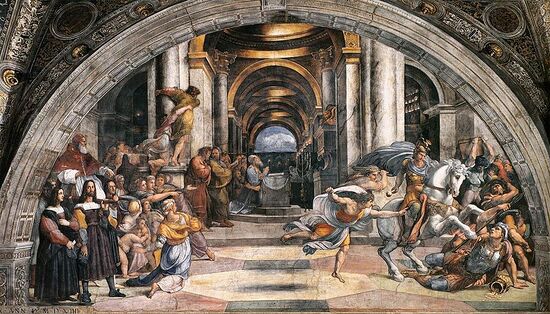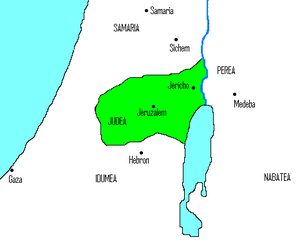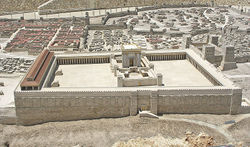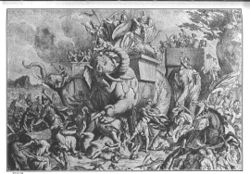Category:Heliodorus (subject)
|
Judas Maccabeus -- Overview
After the disastrous battle of Magnesia in 189 BCE, the Seleucid administration needed money to pay the tribute to Rome. An opportunity was offered by a certain Simon, a political opponent of the High Priest Onias III, who before the governor Apollonius denounced the presence of private funds in the treasure of the Temple of Jerusalem. The attempt to seize those funds miserably failed; the High Priest Onias III was strong enough to beat the Seleucid envoy, Heliodorus, bribe him, and send him empty-handed back to the King. The episode is recorded in Jewish sources--2 Maccabees (3:1-40) and 4 Maccabees (4:1-14, where however the king's official who went to Jerusalem is Apollonius, the governor of the province, not Heliodorus); both sources attribute the favorable outcome to the intervention of divine forces. Appian ("De Rebus Syriacis," 45) states that in 175 BCE Seleucus IV Philopator was murdered by one of his courtiers (τὶς τῶν περὶ τὴν όνλὴν), named Heliodorus, who attempted to seize the Syrian crown, but was eventually executed by Seleucus' brother and successor Antiochus IV Epiphanes. It is likely but not certain that this was the same Heliodorus. Gabriele Boccaccini, University of Michigan Related categoriesExternal links
Ancient Sources |
Fiction For some time the episode of the Expulsion of Heliodorus from the Temple became very popular in Roman Catholic iconography, since Pope Julius II wanted Raphael to depict it in his rooms in the Vatican as a symbol of the sanctity and inviolability of Church property.
|
Pages in category "Heliodorus (subject)"
The following 7 pages are in this category, out of 7 total.
1
- Expulsion of Heliodorus from the Temple (1512 Raphael), art
- Expulsion of Heliodorus from the Temple (1662 Flémal), art
- Expulsion of Heliodorus from the Temple (1674 Lairesse), art
- Expulsion of Heliodorus from the Temple (1725 Solimena), art
- Heliodorus and Onias (1726 Tiepolo), art
- Heliodorus Driven out of the Temple (1791 Thorvaldsen), art
- Expulsion of Heliodorus from the Temple (1861 Delacroix), art



